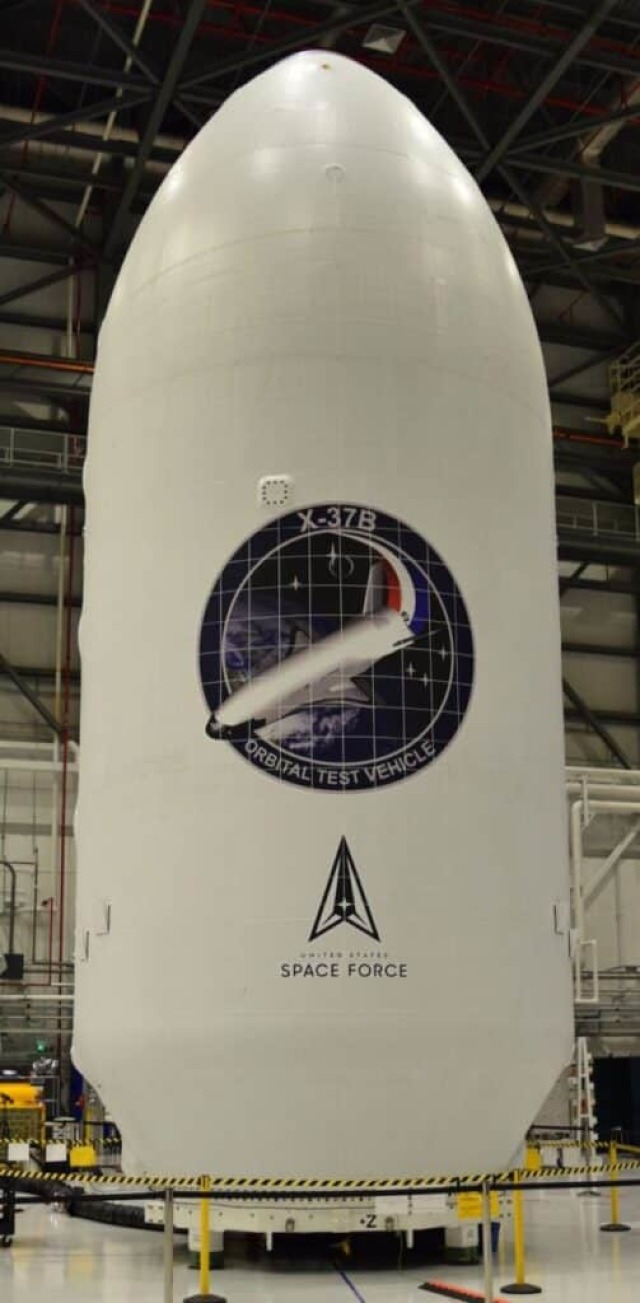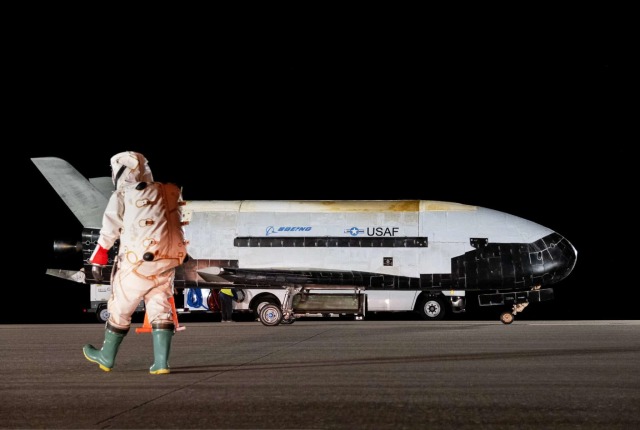All six previous launches of the X-37B unmanned spaceplane were carried out on medium-capacity launch vehicles. Now a superheavy class carrier will take the secret plane into space. This means that not only the payload of the device will increase, but also, probably, the height of its working orbit.
The seventh mission of the reusable X-37B space plane of the US Air Force is scheduled for December 7. The spaceplane will be launched into orbit by a SpaceX Falcon Heavy launch vehicle, which will be launched from the Kennedy Space Center in Florida, the Ars Technica portal reported, citing officials.
This is quite unexpected news, the journalists noted, because previously the device was launched by Atlas V and Falcon 9 medium-class carriers. Now it will be sent into space for the first time by a superheavy rocket from SpaceX.
The new mission was designated USSF-52 (OTV7). As for the payload of the device, it, as in previous times, remains a secret. In their statement, the US Space Forces were laconic: they only said that the seventh X-37B mission would have "a wide range of tests and experiments."
"The tests include the operation of a reusable space plane in new conditions, experiments with new space technologies, as well as experiments with the effects of radiation on materials provided by NASA," the military said.
As for experiments with radiation, it probably refers to the Seeds-2 experiment, during which plant seeds are exposed to an aggressive radiation environment.

X-37B orbital test vehicle in a capsule with the logo of the US Space Forces
Image Source: Boeing
The Pentagon wants everyone to know about the existence of the X-37B space plane, but military officials are silent about the details of its missions. The statement of the Space Forces made the day before was equally vague about the details of the upcoming flight.
Although the X-37B orbital test vehicle is shrouded in secrecy, something is known about it. For example, that small satellites can be launched from it, experiments can be carried out on board. The experimental aircraft is reusable and completely unmanned. He can quickly change orbits, maneuver. The device generates electricity using a solar battery and returns independently to Earth in airplane mode, lands on the runway.
Reference
X-37B is a Boeing development for the US Air Force (a little later the project was transferred to the US Space Forces). Earlier, military officials admitted that there are two X-37B machines, each of them has flown several times.
The length of the spaceplane is 8.9 meters, the wingspan is 4.5 meters.
In the central part of the fuselage of the X-37B there is a cargo compartment for the payload, as well as a one-time service module, which was first tested in the previous mission. Apparently, this module provides additional opportunities for conducting experiments.
The test vehicle is delivered into orbit inside the head fairing of Falcon 9 or Atlas V rockets, that is, just like any other satellite with a payload.
The X-37B was first sent into space in April 2010. The spaceplane made its last flight in 2022: during this mission, the unmanned aircraft spent 30 months (908 days) in orbit, which became the longest flight of the X-37B to date. The device can operate at altitudes from 200 to 750 kilometers, in orbits inclined to the plane of the earth's equator at an angle approximately equal to 55 degrees.
The words of the US military that during the seventh flight the ship will be "tested in new conditions", apparently, mean that the new X-37B mission will be carried out in a higher orbit than in previous times. This is quite logical, since the device launches the Falcon Heav y carrier, which has a significantly higher payload capacity than the Falcon 9 or Atlas V rockets that the Pentagon used for past X-37B launches.
The take-off weight of the unmanned vehicle is about five tons (without a service module). The USSF-52 mission document, published by the military several years ago, stated that for the seventh launch of the X-37B, "a payload of at least 6.35 tons will be required," and the flight itself will have to take place in a "geostationary transition orbit" (its height reaches 35 thousand kilometers). This is quite a big change compared to the previous flights of the military shuttle, the height of which was no more than several hundred kilometers.
However, this document is more than five years old, which means that the plan of the seventh mission may have changed. Military officials usually do not report the parameters of the orbit of upcoming space flights, but vigilant amateurs can calculate its height and inclination using publicly available information related to the launch of rockets, which is published closer to the launch date.
There are many opinions about what the X-37B mini-shuttle actually is. This aircraft is of particular concern to Russia and China, who believe that it can be a carrier of reconnaissance vehicles or even weapons of mass destruction (WMD). At the same time, the conclusions that a spaceplane can carry WMD are unlikely to be justified, since this is prohibited by existing international treaties.

